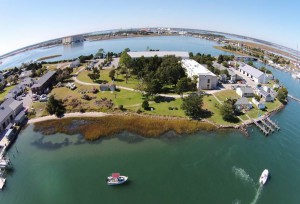
A recent NOAA study shows Living Shorelines are not only an excellent method of erosion control for coastal properties but also sequester carbon which increases coastal resilience. Living shorelines are a green infrastructure technique of incorporating native vegetation alone or in combination with offshore sills to stabilize the shoreline. Continued use of the living shoreline approach to coastal resilience will result in increased carbon sequestration and storage which may help mitigate effects of climate change.
Blue carbon potential of salt marsh meadows is well documented, but this is the first study to address the capabilities of the narrow, fringing marshes created by Living Shorelines. Other benefits of this green infrastructure approach include nutrient pollution remediation, essential fish habitat provision, and buffering of shoreline from waves and storms.
The study was conducted in fringing marshes in North Carolina that ranged in age from 12 – 38 years representing a build-up of soil in which carbon capture and storage can be tracked. Carbon sequestration rates decreased with marsh age and ranged from 73 to 283 grams C/m2/yr.
Results of this work indicate that carbon sequestration is an added value of the living shoreline approach to erosion control and that continued and expanded use of this shoreline management approach can make a contribution to carbon dioxide reduction strategies.
For more information contact Jenny Davis or Carolyn Currin.
